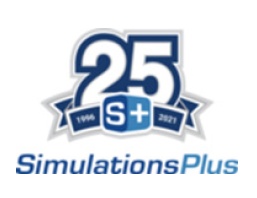Simulations Plus Partners with Large Pharmaceutical Company to Drive Advancements to the GastroPlus Mechanistic Oral Absorption Model
Collaborative research effort will further enhance the ACAT model to aid scientists in the detailed understanding of local drug disposition in the gastrointestinal tract

Simulations Plus, Inc. (Nasdaq: SLP), a leading provider of modeling and simulation solutions for the pharmaceutical, biotechnology, chemical, and consumer goods industries, announced a new funded collaboration with a large pharmaceutical company to modify the GastroPlus® Advanced Compartmental Absorption and Transit (ACAT™) model in support of ongoing research programs for the treatment of gastrointestinal diseases.
Dr. Viera Lukacova, division chief scientific officer of Simulations Plus, said: “Our GastroPlus ACAT model has, time and again, been independently validated as the most accurate simulation engine for the prediction of oral absorption for drugs and chemicals across species and population groups. This new collaboration will accentuate GastroPlus functionality in local gut delivery through extensions to the mechanisms and physiological databases that underpin the ACAT model. These enhancements will be complemented by improved data handling and workflows to aid our partners in evaluating and developing next-generation treatments for various gastrointestinal diseases. We look forward to leveraging their expertise and the unique data they will be sharing on this important project.”
“Our second announced collaboration in 2022 dovetails perfectly with other active programs to enhance the GastroPlus ACAT model as the preeminent approach for predicting oral product performance, food effect considerations, pH-dependent drug-drug interaction risk, and virtual bioequivalence assessment,” added John DiBella, division president, Simulations Plus. “We are pleased with the confidence and trust our partners have in the GastroPlus platform and with our scientific team, and we look forward to sharing the exciting developments with all users to advance model-informed drug development.”
